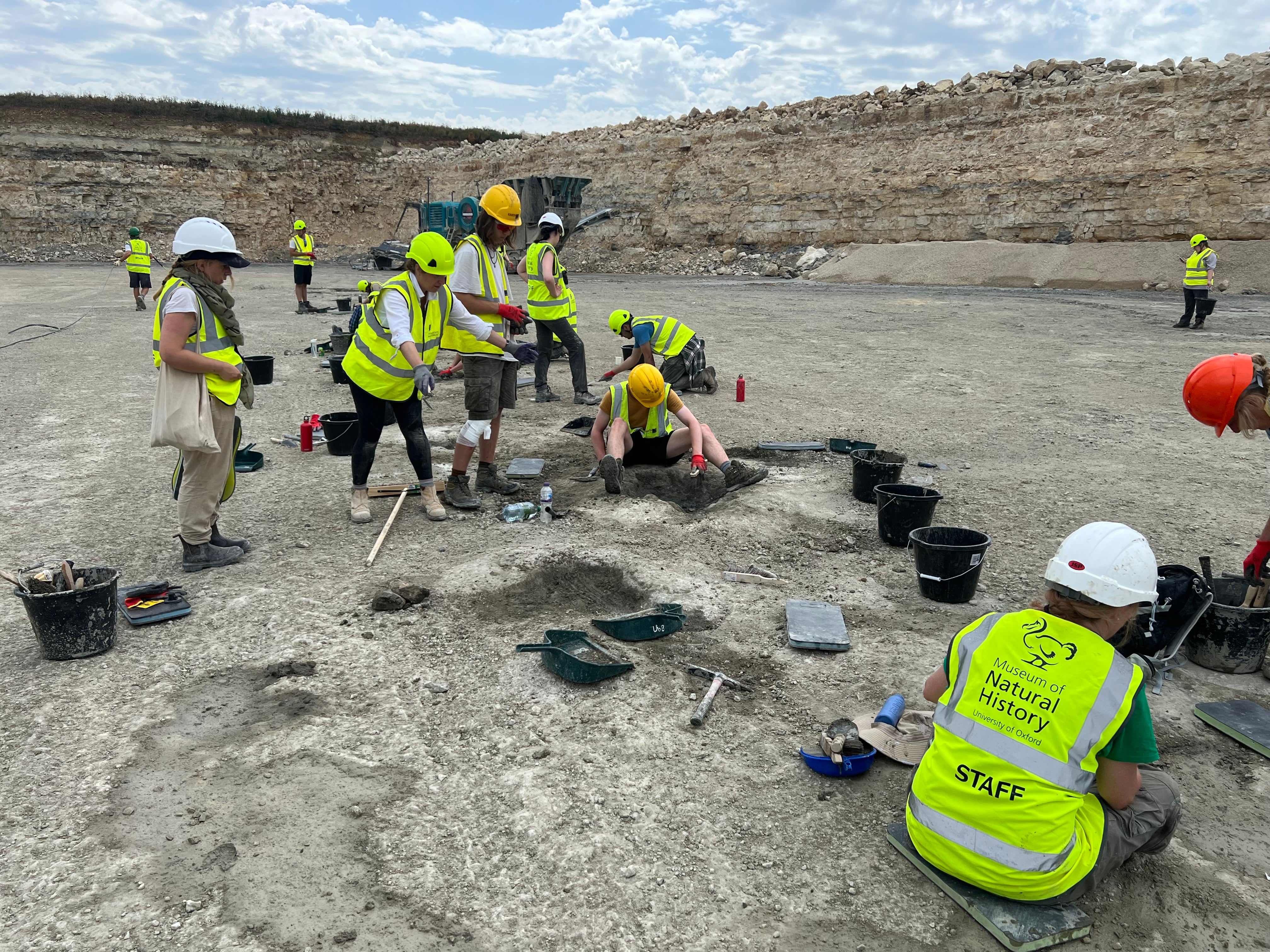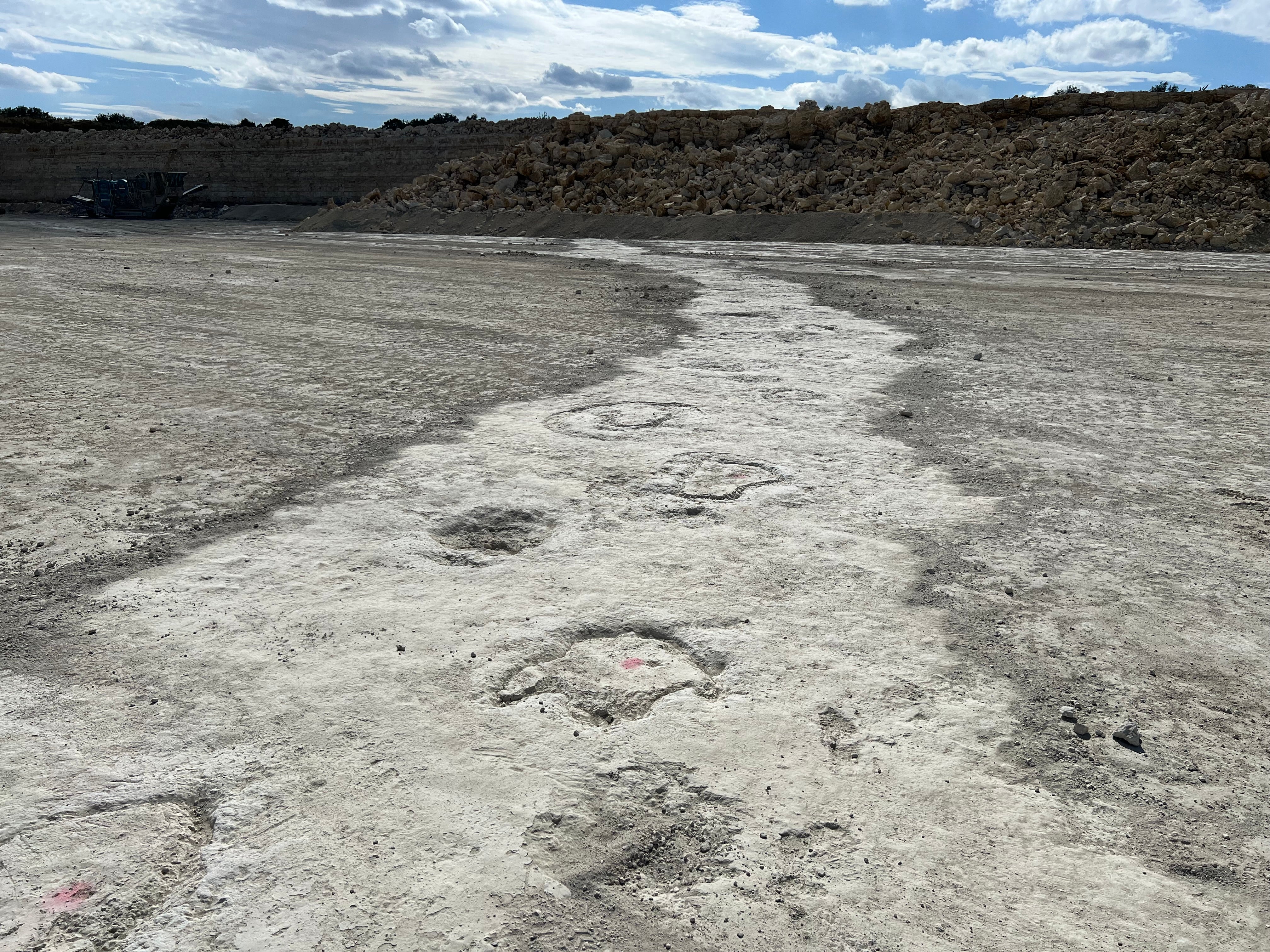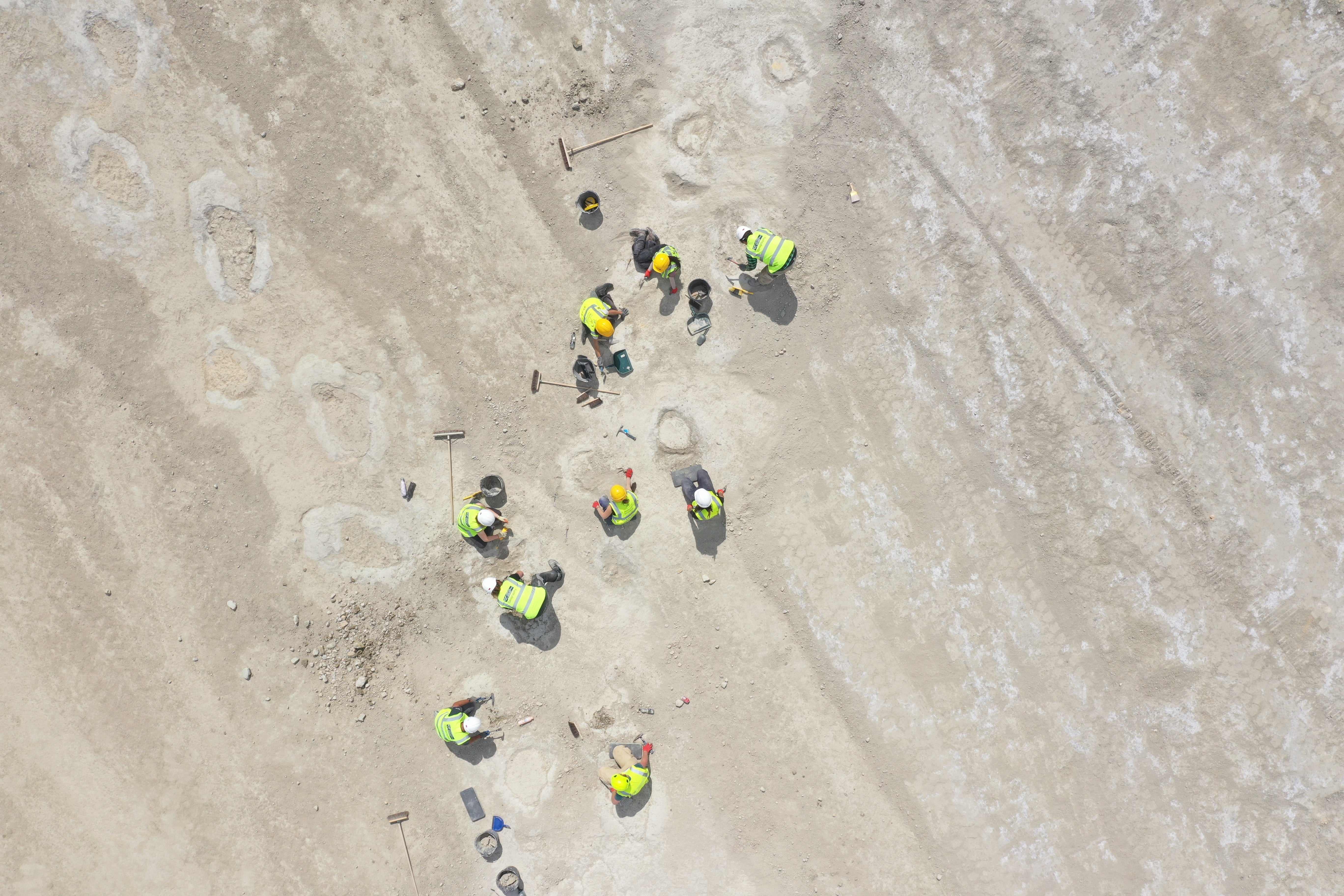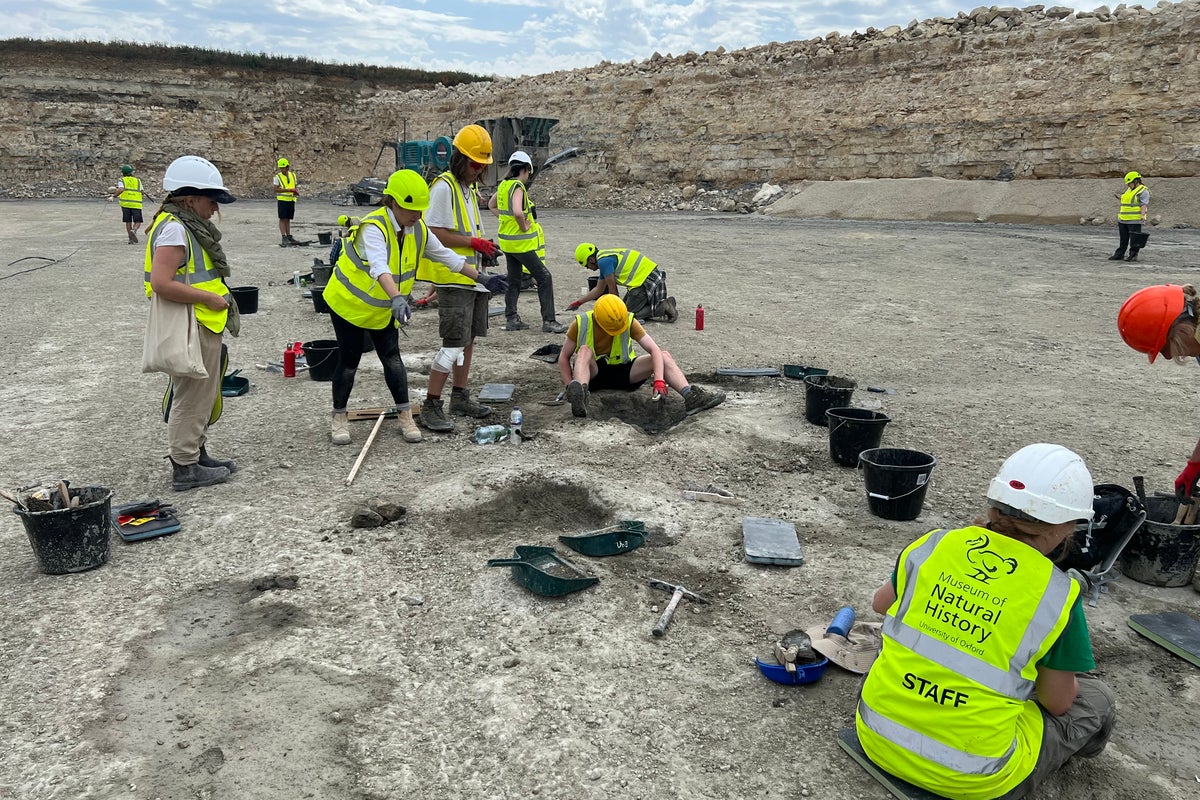The most extensive dinosaur trackways ever discovered in Europe have been uncovered at an Oxfordshire quarry, stunning palaeontologists, who have gained new insights into how dinosaurs moved through the landscape.
An astonishing 220-metre trail left by enormous sauropod dinosaurs – herbivorous four-legged animals with long necks and tails – was found at Dewars Farm Quarry, near Bicester, during work to remove limestone.
The tracks are believed to have been made by a species of sauropod known as Cetiosaurus, which grew up to around 16 metres in length and lived around 171 to 165 million years ago in what is now Britain and France.
The team, co-led by the Oxford University Museum of Natural History and the University of Birmingham, uncovered hundreds of individual footprints traversing the site, with sauropod footprints as well as a few rarer three-toed prints believed to have been made by meat-eating megalosaurs.
“We’ve been working at this site since 2022 and slowly uncovering more and more of this surface,” Dr Duncan Murdock, from Oxford University’s Museum of Natural History, told The Independent.
“This summer we excavated four trackways, the longest of which is 220 metres, with nearly 100 individual footprints, each of which is nearly a metre long itself – so absolutely huge.

“With that we can work out how big this animal was. Roughly speaking, the height of a hip is about four times the print, so about four metres to the hip, which works out to about 15 or 16 metres long from head to tail, and [weighing] up to 10 tonnes.”
The prints the animal left behind give new clues about how it moved, in particular how quickly these creatures were walking.
Dr Murdock said the speed calculations are “based on measurements of the prints but also the stride length”.
“From what we know about how four-legged animals move, like elephants today, we can use that stride length and estimates of the hip height to calculate speed. If you’re running, your stride gets further apart than if you’re walking. We estimate [the dinosaur’s speed to be] about 4 or 5 miles an hour – around the average walking speed of most people,” he said.

What we now call Oxfordshire was quite a different place 166 million years ago. At that time, Britain was much farther south than it is today – around the same latitude as northern Africa – and the sea level was much higher, creating large inland seas dotted with islands. Furthermore, enormous dinosaurs were striding about on mudflats as they traversed the watery landscape.
“Think about the Florida Keys or the Bahamas Banks, that sort of thing. There would have been mudflats that were occasionally exposed to the air, and it’s one of these mudflats running along a chain of islands that the dinosaurs were walking along. They were taking advantage of this to move between islands,” Dr Murdock said.
While there are quite a few sites around the world, and in the UK, where dinosaur prints can be found – often by the coast, where erosion by the sea is exposing the rock – the site in Oxfordshire is unusual due to its scale.

University of Birmingham palaeontologist Kirsty Edgar told The Independent: “It’s so rare to see something like this in the UK as most of our dinosaur-track sites are small coastal exposures. As the quarry continues to expand, so do the dinosaur tracks, providing an increasingly rich snapshot into the life and times of these amazing animals.
“It’s so exciting to be able to stand where some of the largest animals that ever lived once walked, and imagine what their lives and world looked like.”
Professor Edgar added: “Dinosaur tracks provide us with the opportunity to glimpse how dinosaurs lived, and what they were doing at that moment in time – something we can’t get from the body fossil record alone.”
For now, the dinosaur footprints are being carefully recorded before being reburied to protect them. Officials say there are no immediate plans to reopen the site or make the tracks accessible to the public.
However, discussions are underway with Natural England, quarry operators Smiths Bletchington, and the local authority about the possibility of future excavations. Until then, the quarry will remain in active use, with extraction work continuing for the foreseeable future.


